Measurement Teaching Resources
Is your maths class ready to dive into length measurement, measuring objects and more measurement practice? Say hello to printable units of measurement worksheets, games and digital activities created by teachers for teachers!
This collection of teaching resources was created by our expert maths teachers to help students meet Australian Curriculum standards. Each printable and digital download has undergone a rigorous review by the teachers on the Teach Starter team to ensure they’re student-ready — so you can cut down on lesson planning time!
New to teaching this part of the maths curriculum? Our teacher team knows what it’s like to suddenly teach a brand-new year level, so we’ve put together a quick guide to teaching measurement!
What Are the 4 steps of Teaching and Learning Measurement?
Students have to learn a long list of measurement concepts during their time in primary school, including:
- length
- liquid volume
- elapsed time
- mass (weight)
- area
- volume of three-dimensional figures
The good news for teachers: Most measurement concepts have very real-world applications for students. That means there's a whole world of ways to get students excited about reading a ruler or tape measure or weighing heavy objects on a scale.
But before you can get there, let's start with the basic steps to work through when you're teaching students how to measure ... well ... anything!
- Direct Comparison — One of the earliest steps of learning measurement is learning the attributes that are being measured. For example, students need to learn what length is if they're ever going to measure it. That's where direct comparison (and step 2, indirect comparison), come in. If you put 2 objects side by side, students can directly compare which is longer and which is shorter and start to understand how to measure an object.
- Indirect Comparison — What happens when you can't directly compare two objects? You can add a third as a reference point for indirect comparison, thereby increasing student understanding of the attribute being measured.
- Measuring With Non-Standard Units or Informal Units — Just as students need to understand the attribute of measuring, they also need to understand the concept of the units we use to measure such as metres or litres. Using non-standard units is the first step to teaching the concept of units, offering students the chance to work with different objects, counting how many of these 'units' it takes to make up another. This is the fundamental base of measurement.
- Measuring With Standard Units — In the final step of teaching measurement, students move on to using the formal units of measurement and learn to use measurement instruments.
Why Is Teaching Measurement Important?
There are concrete uses for learning measurement that will surely spring to mind — from using a tape measure to measure a space in a home to weighing ingredients when baking to determining the capacity of a juice glass before pouring in the liquid. These are all means for quantifying our environment.
But the benefits of teaching students about measuring lines with a ruler or figuring out mass measurements from largest to smallest go well beyond the obvious. Learning to measure helps students develop spatial and number skills.
- Plus Plan
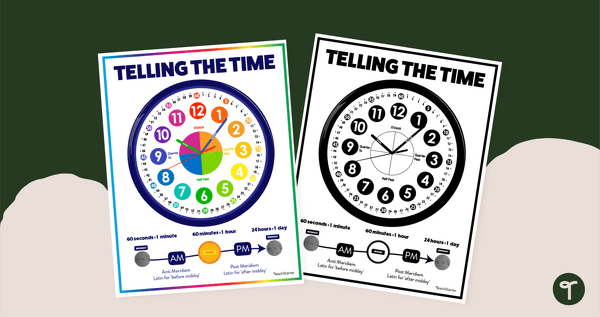
Telling the Time Poster
Help your students learn to tell the time to the hour, half-hour, quarter, and minute with a printable Telling the Time anchor chart PDF.
- Plus Plan
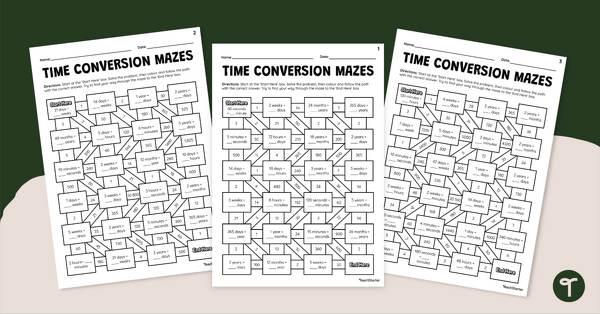
Time Conversion Maths Mazes
Convert units of time while finding your way through this set of 3 Time Conversion maths mazes.
- Plus Plan
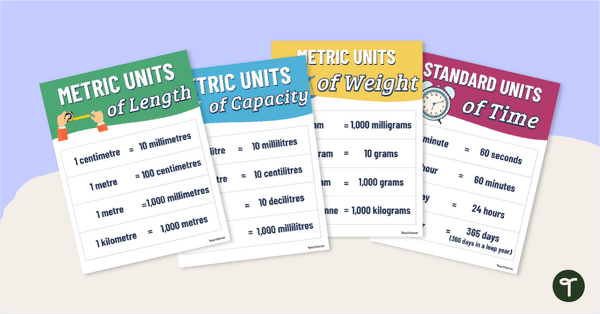
Converting Units of Measurement Posters
Use these posters to assist your students to learn and convert the different units of measurement.
- Free Plan
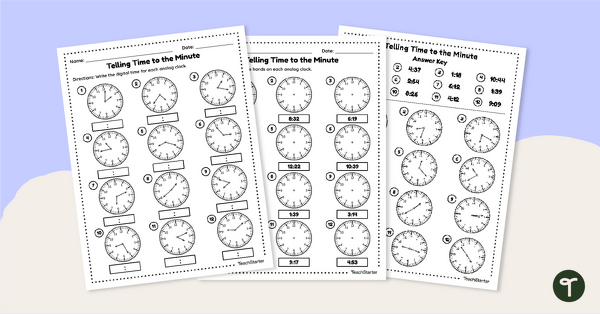
Free Telling Time to the Minute Worksheets
A worksheet for telling time to the minute and converting between analogue and digital times.
- Plus Plan

Perimeter Maths Investigation – Design a Garden
Get students to design a garden with this student-centred perimeter project for middle primary students.
- Free Plan
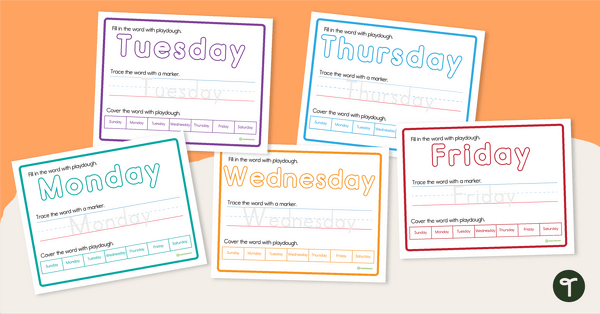
Days of the Week Playdough Mats
Use playdough mats to help your students identify, sequence and spell the days of the week.
- Plus Plan
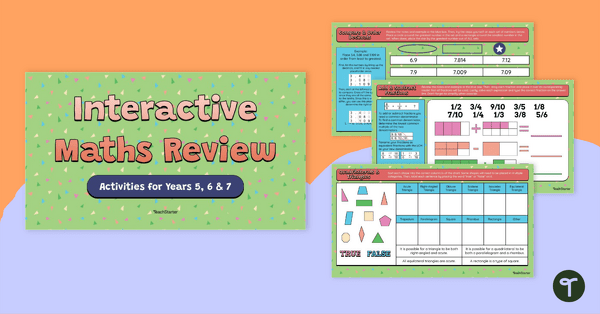
Interactive Maths Review – Activities for Years 5, 6 and 7
Review important maths concepts covered in years 5, 6 and 7 with a student-led interactive activity.
- Plus Plan
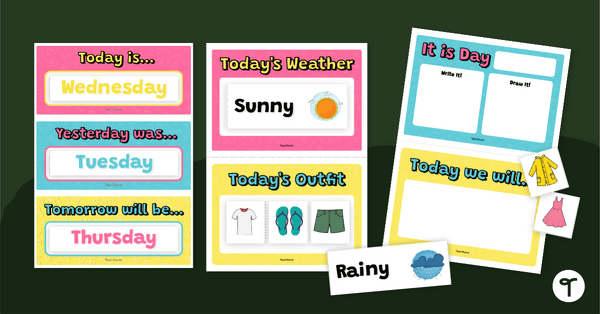
Days of the Week Calendar Maths Classroom Display
Help students learn the days of the week with a daily calendar maths display.
- Plus Plan
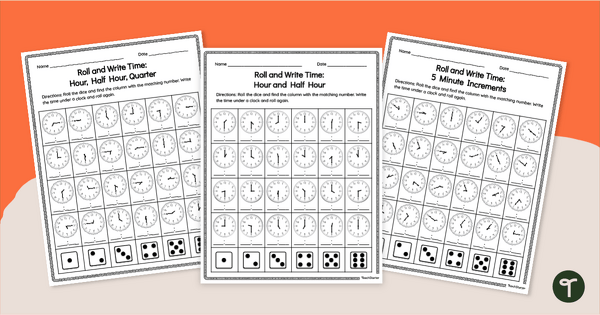
Roll and Write - Telling Time Dice Game
Have fun learning how to tell time with a Roll and Write Telling Time Dice Game!
- Plus Plan
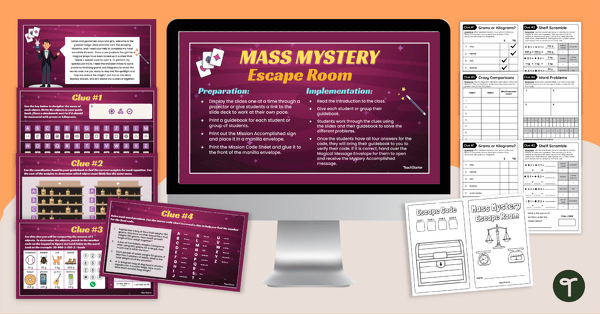
Mass Mystery Escape Room
Explore the different elements of mass with this super fun and engaging escape room resource.
- Plus Plan

Volume Escape Room
'Escape' ordinary volume activities with this engaging volume escape room that will have students solving volume challenges on a quest for a lost civilisation.
- Plus Plan
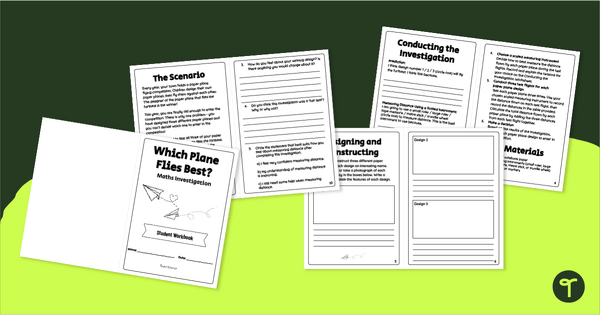
Paper Airplane Challenge - Measuring Distance Maths Activity
Practise measuring distance and have fun hosting a paper plane competition using a printable math investigation workbook.
- Plus Plan
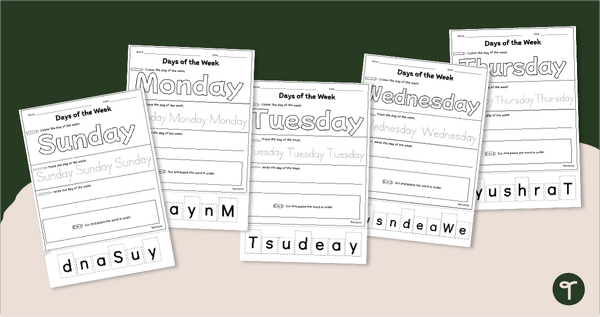
Days of the Week Spelling Worksheets
Use these Days of the Week Spelling worksheets to help your students practise reading, writing, and spelling the Days of the week.
- Free Plan

Classroom Clock Labels - Flower Display
Use our Flower Wall Clock Labels to create a garden-themed clock display to help children read the time.
- Plus Plan
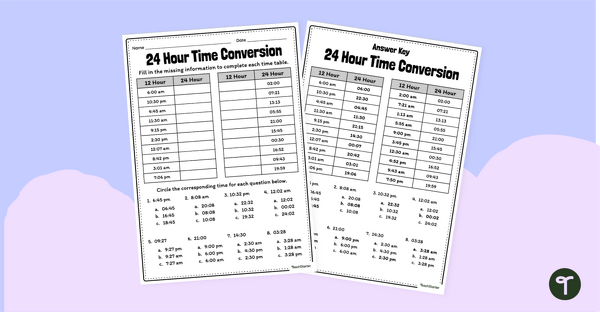
Converting Time Worksheet - 12 to 24 Hour Time
Review how to convert 12-hour to 24 hour time with a printable converting time worksheet.
- Plus Plan
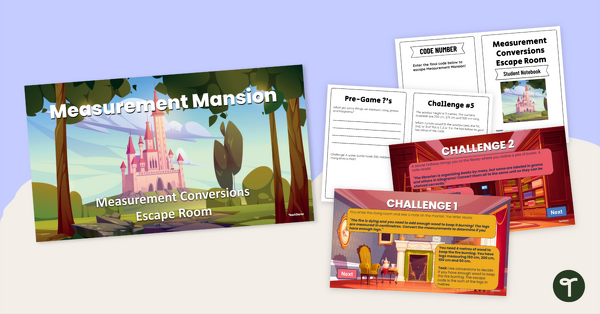
Measurement Escape Room
‘Escape’ the ordinary in your classroom with this measurement escape room that will engage your students as they solve measurement conversion problems.
- Free Plan
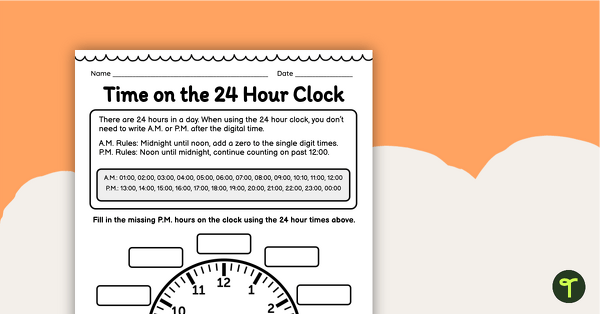
Telling 24 Hour Time - Clock Worksheet
Download a free Year 5 Telling Time worksheet to practise telling time on a 24-hour clock.
- Free Plan
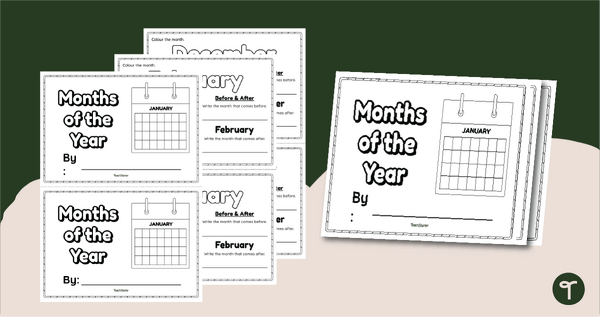
Months of the Year Printable Activity Book
Create months of the year booklets to help your students identify, sequence and spell the months in a year.
- Free Plan
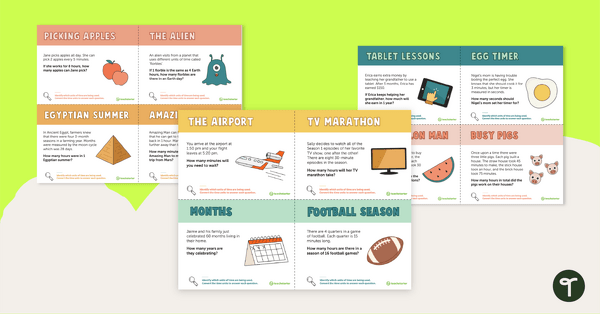
Converting Units of Time – Task Cards
Practise converting time with a handy set of free Time Unit Conversion Task Cards.
- Plus Plan
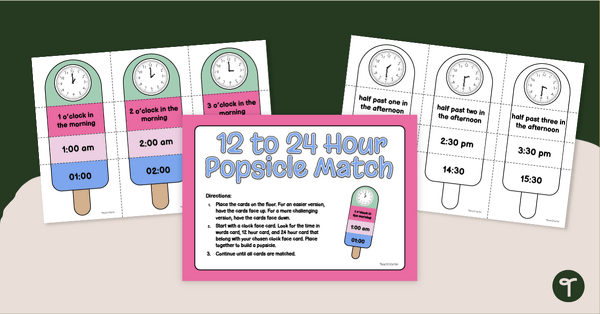
12 and 24-Hour Time Puzzle Pops
Build batches of tasty ice lollies with a maths centre to match 12 and 24-hour times.
- Plus Plan
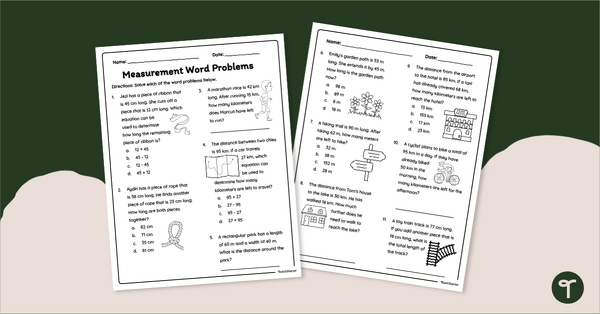
Length Word Problems - Year 3 Maths Worksheet
Help your students relate addition and subtraction with length using a printable Measurement Word Problems Worksheet for Year 3.
- Plus Plan
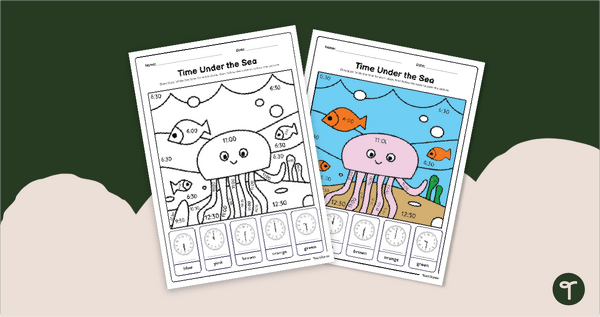
Telling Time - Year 1 Maths Colouring Sheet
Practise telling time to the hour and half hour with a fun Telling Time Colour By Code maths worksheet!
- Plus Plan
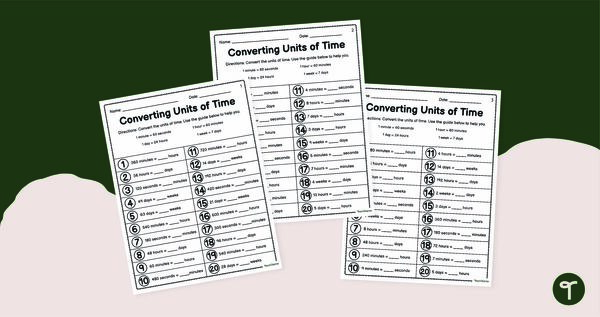
Converting Time - Worksheet Pack
Download a set of Time Conversion printable worksheets to help your students convert between minutes, hours, days and weeks.
- Plus Plan
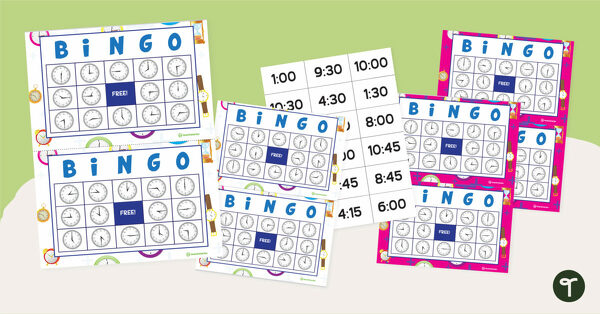
Telling the Time Bingo – Hour, Half-hour, Quarter To and Quarter Past
Play a few rounds of Telling the Time Bingo to practise telling the time to the quarter hours.
- Plus Plan
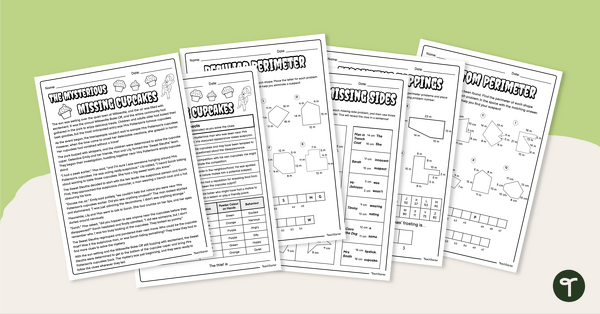
Perimeter Escape Room – The Mysterious Missing Cupcakes
Have your super-sleuth students solve this perimeter escape room to find out who stole the missing cupcakes!
- Free Plan
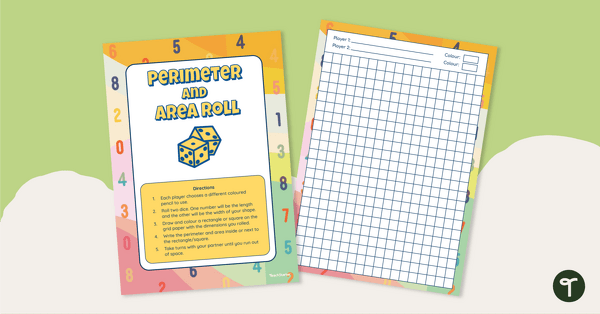
Perimeter and Area Dice Game
Use this area and perimeter dice game as a pair activity during your maths lessons on measurement.
- Plus Plan
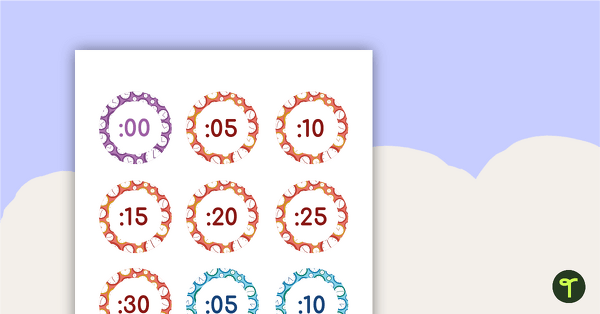
Clock Labels – 'Past' and 'To'
A template to display around your classroom clock that highlights 'past' and 'to' terminology.
- Plus Plan
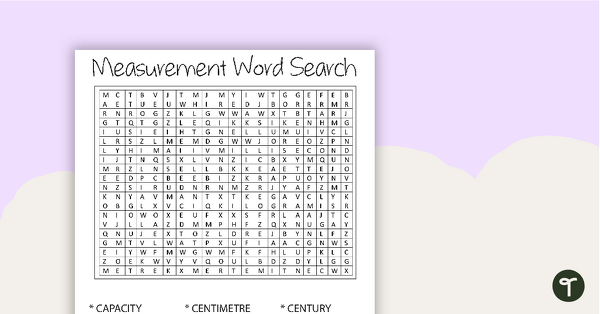
Measurement Word Search with Solution
A fun word search to help your students learn measurement vocabulary.
- Plus Plan
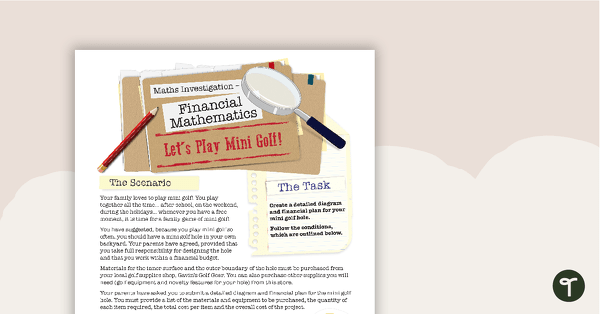
Financial Mathematics Maths Investigation – Let's Play Mini Golf!
A mathematics investigation about financial mathematics and measurement, embedded in a real-world context.
- Plus Plan
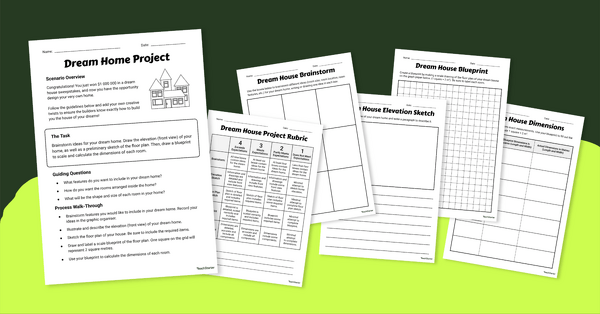
My Dream Home Project
Introduce our 'My Dream Home Project’ to your students to help them increase spatial skills while designing the house of their dreams!
- Free Plan
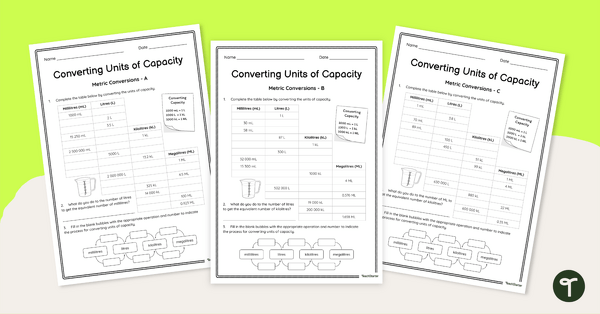
Converting Capacity Worksheet Set
Assign these converting capacity worksheet pages to give your students essential practice converting metric units of capacity.
- Plus Plan
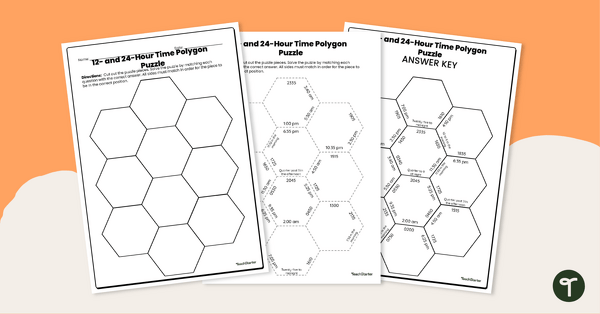
12 and 24 Hour Time Worksheet - Polygon Puzzle
Engage with 12 and 24 hour time with this fun 12 and 24 hour worksheet polygon puzzle.
- Measurement Worksheets
- Measurement Games
- Measurement Posters
- Measurement Templates
- Measurement Teaching Presentations
- Measurement Projects
- Measurement for Preschool/Kindergarten
- Measurement for Foundation Year
- Measurement for Year 1
- Measurement for Year 2
- Measurement for Year 3
- Measurement for Year 4
- Measurement for Year 5
- Measurement for Year 6
- Measurement for Year 7